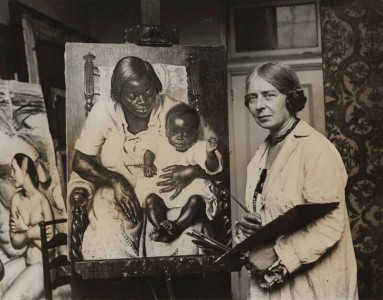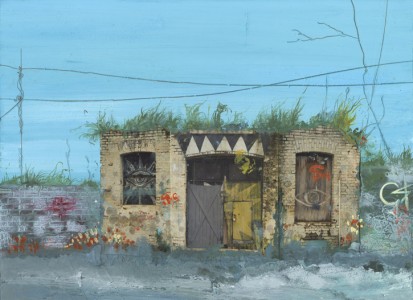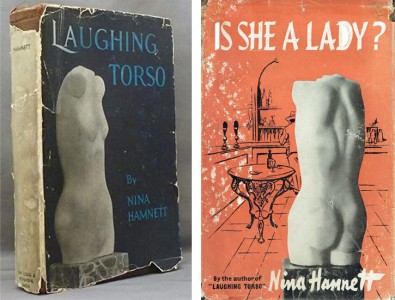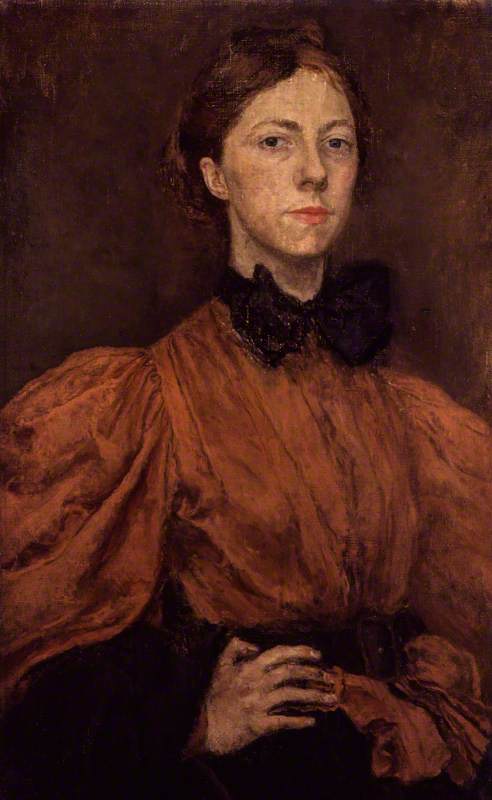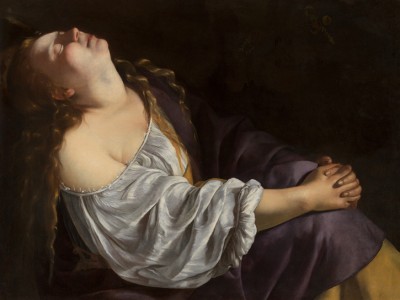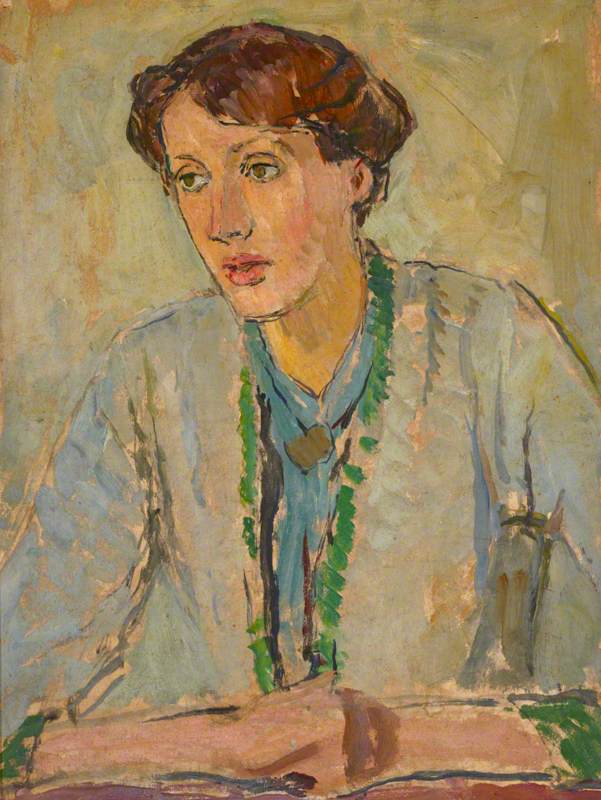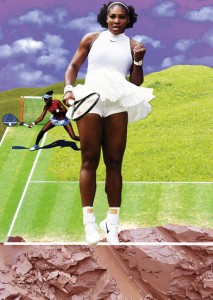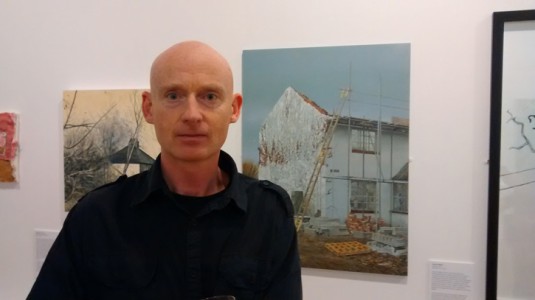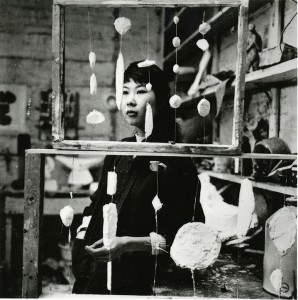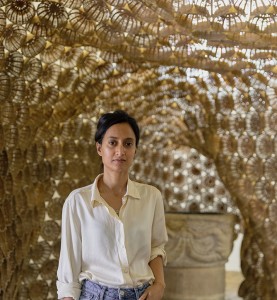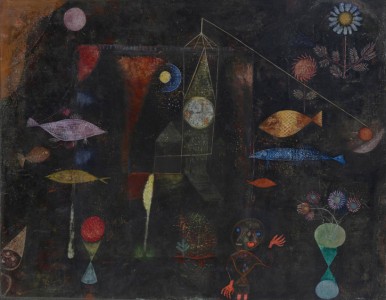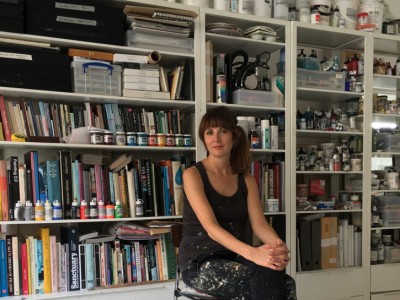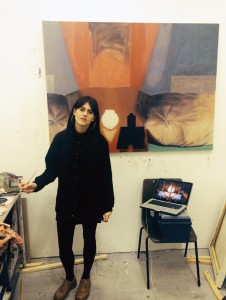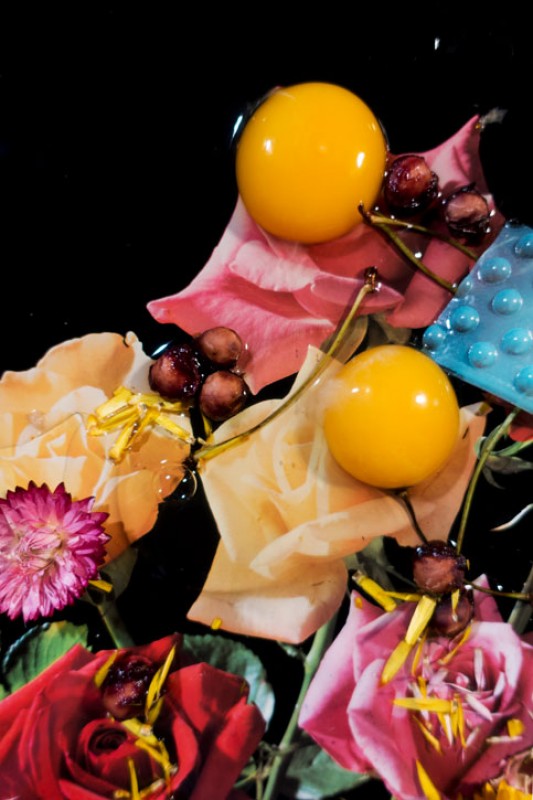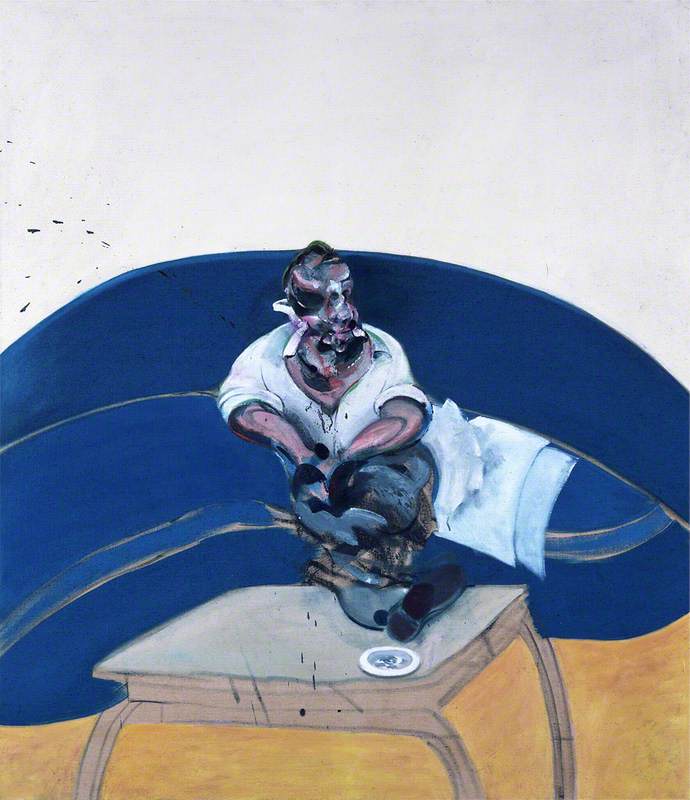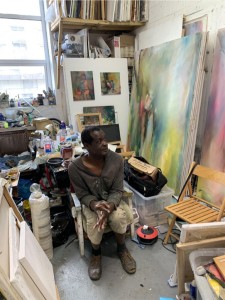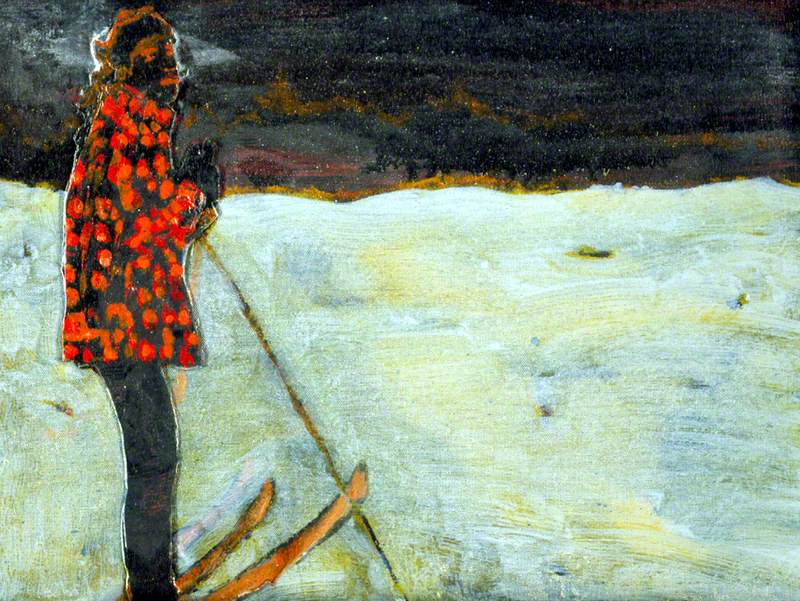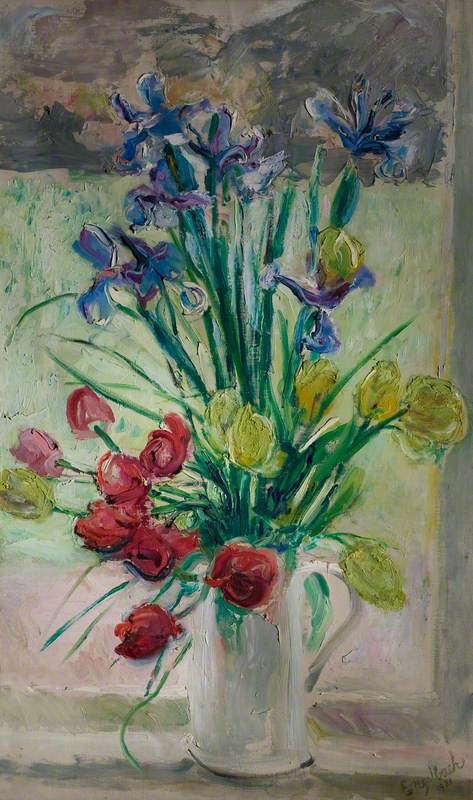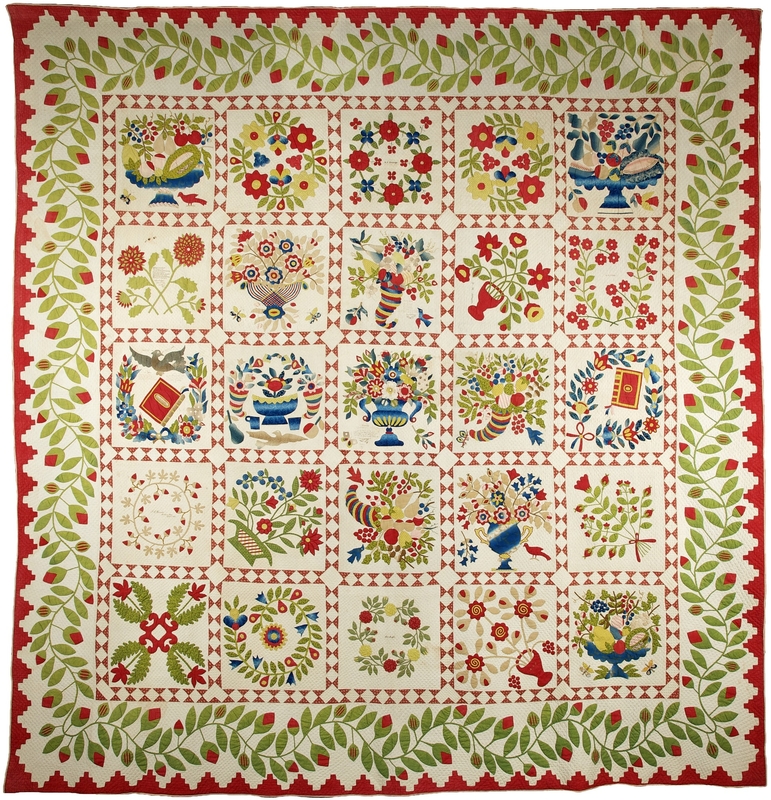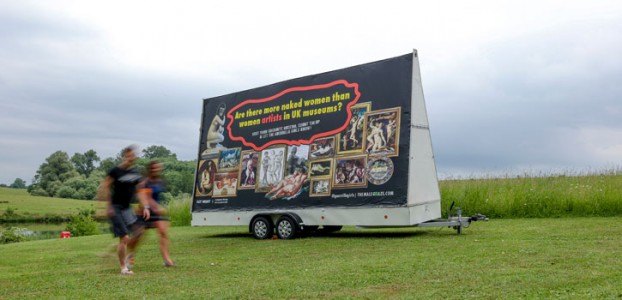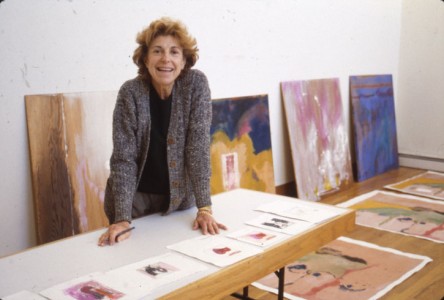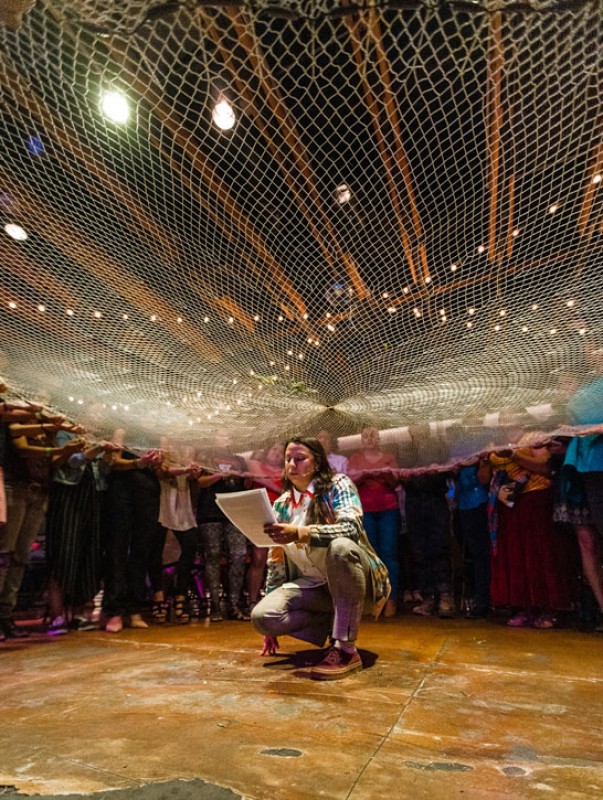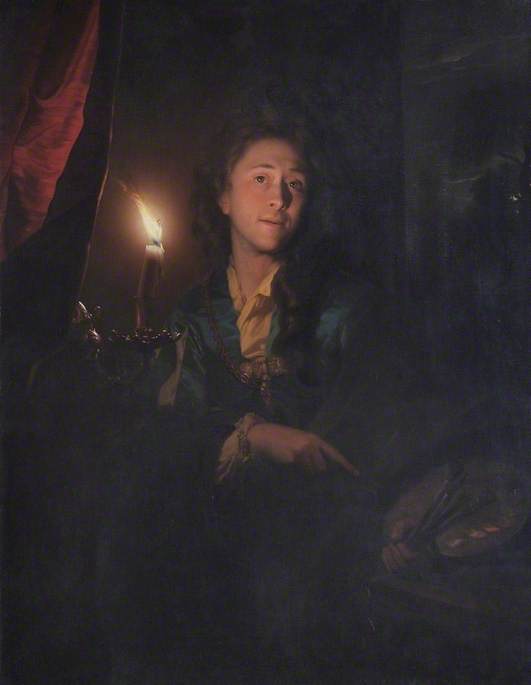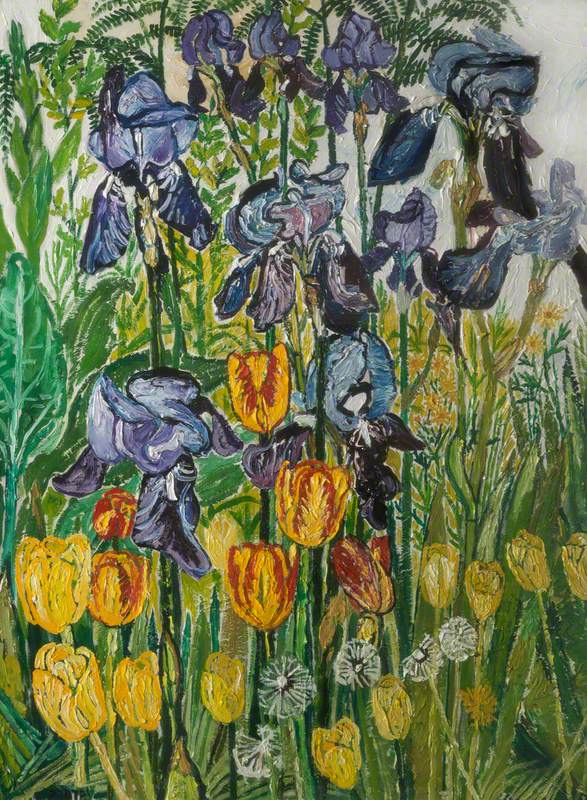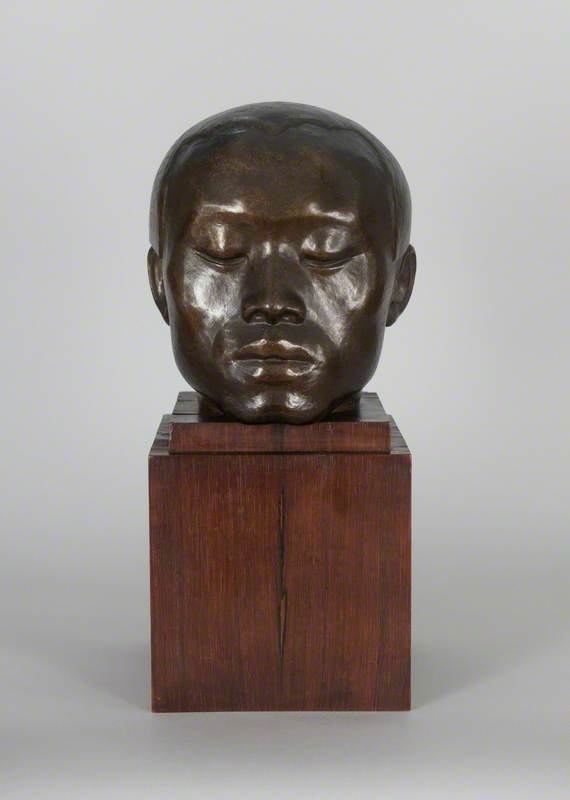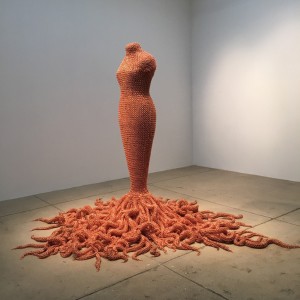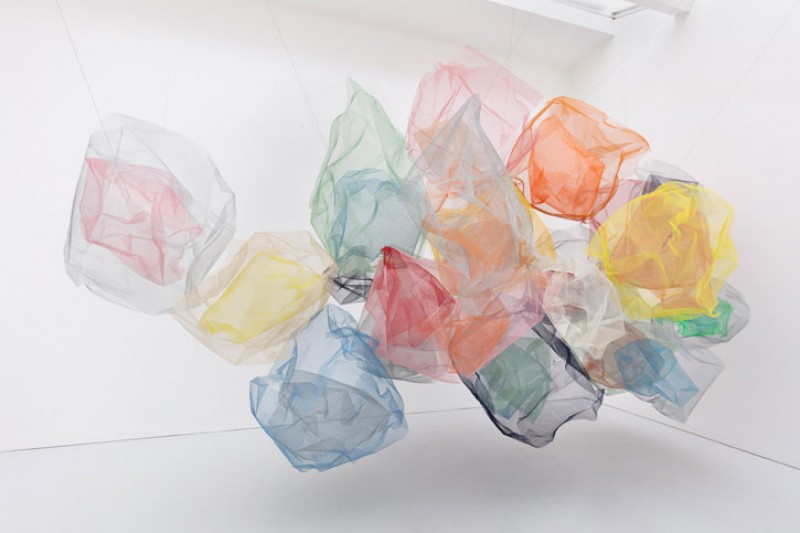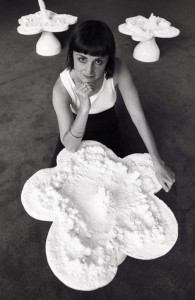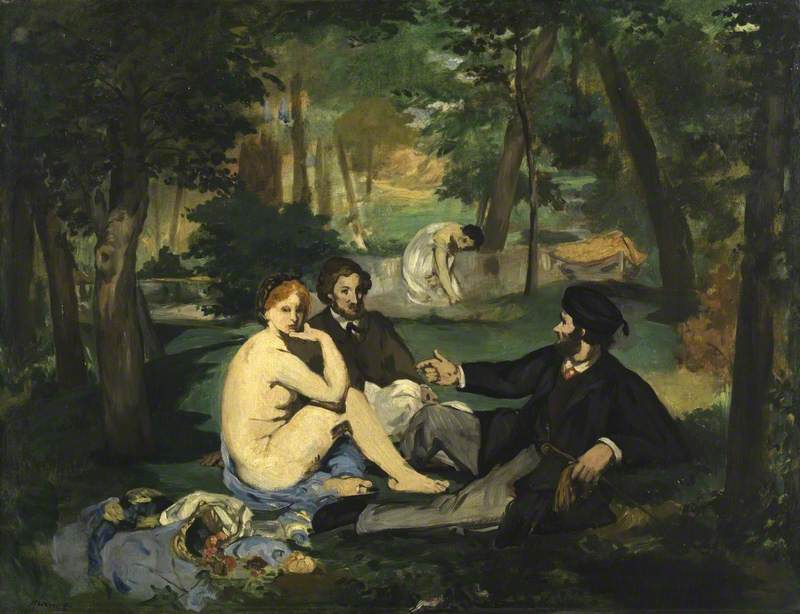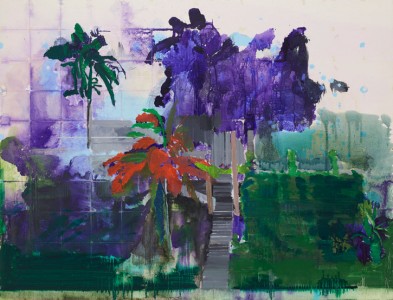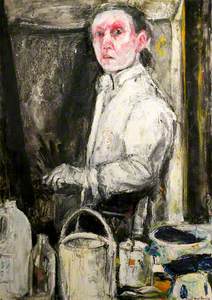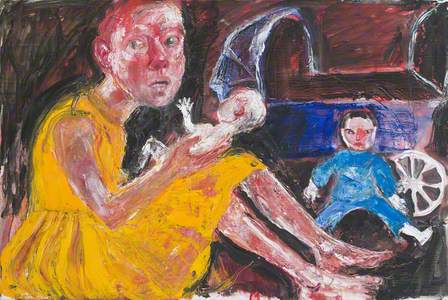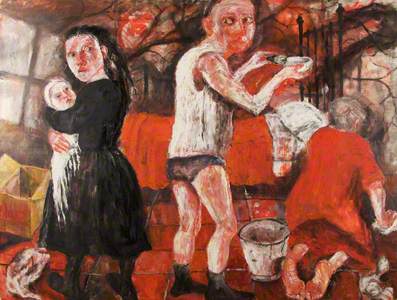Skyping Shani Rhys James has been a definite highlight of my lockdown.
Rhys James is one of Britain's most extraordinary painters. She has won many notable prizes, including the coveted Jerwood Painting Prize, she was the subject of the BBC's documentary series What Do Artists Do All Day? in 2014, and her work belongs to major collections around the world.
As the screen loads, I can see the artist is sat at a wooden kitchen table, with assorted jugs, cups and plates placed in a cupboard behind. These are the objects which fill Rhys James' psychologically charged paintings, in which she subverts traditional 'feminine' narratives of women in the home.
Shani Rhys James in her studio
photograph by Graham CopeKoger 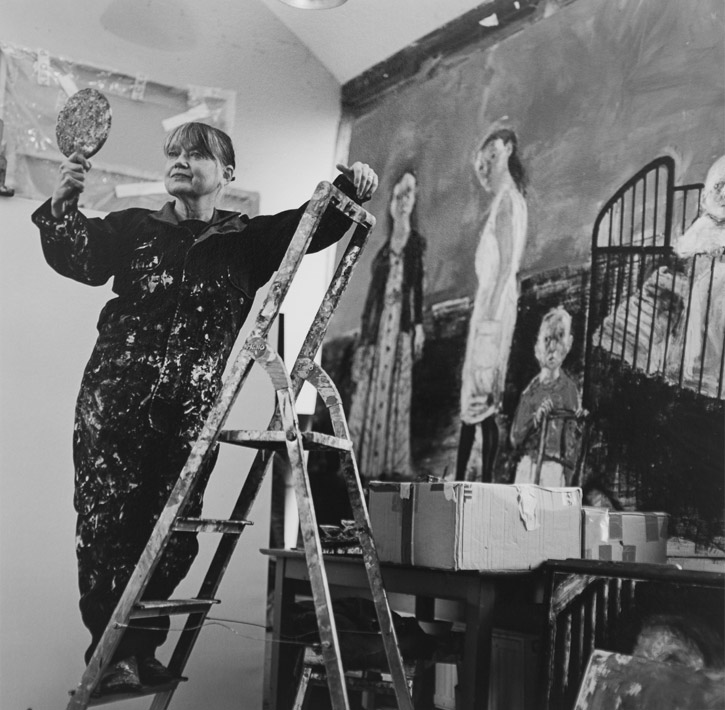
We start by discussing her art education. I'm not surprised to hear that Rhys James has never played by the rules. She trained at St Martin's School of Art during the 1970s, when abstraction was in fashion. Nevertheless, it was at art school where she found 'the freedom of paint and expression to focus on the psychological impact of the figure.' Not long after, her work turned towards the autobiographical. 'I started doing self-portraits in the second year of art college as a way of focusing in on who I was.'
Since then, the self-portrait has been a recurring motif. During the 1990s, the artist painted a series featuring herself in the studio. In Caught in the Mirror she is surrounded by the tools of her craft: tubes of paint, palettes and water pots, brushes and used gloves. Amid this jostle for space, she catches her reflection in an upright mirror.
Throughout art history, mirrors have been used by male artists to comment on women's beauty, femininity and vanity. For example, in Diego Velázquez's The Rokeby Venus, the reclining goddess of love looks upon her nude, sensuous body in a mirror upheld by her son, Cupid.
The Toilet of Venus ('The Rokeby Venus')
1647-51
Diego Velázquez (1599–1660) 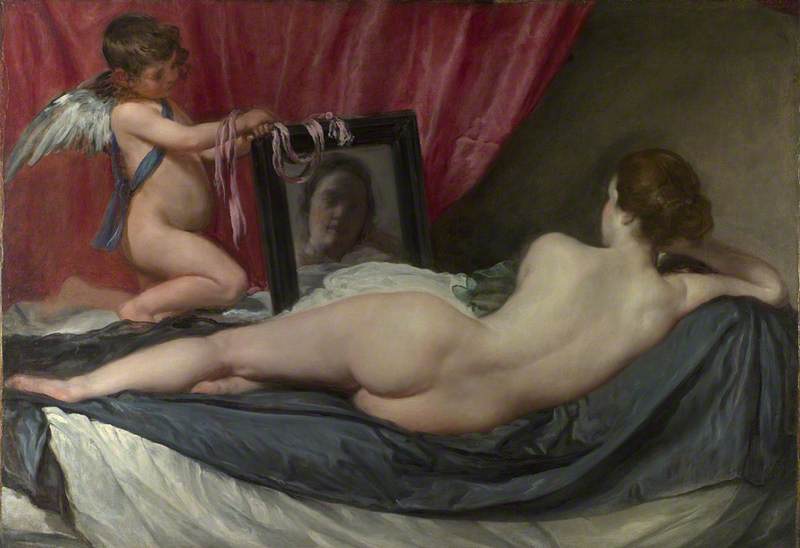
Rhys James turns this tradition on its head. She uses the to mirror to present herself, not as an object of desire, but rather to assert her identity as an artist.
Dressed in paint-splattered overalls, she stands amongst the detritus of the studio. On the tabletop stands a large container of white spirit: 'At St Martin's I was a fire hazard because I used so much white spirit. Eventually, I had to stop using it because of the toxic fumes I was inhaling.'
Shani Rhys James in her studio
2018, photograph by Jo Mazelis 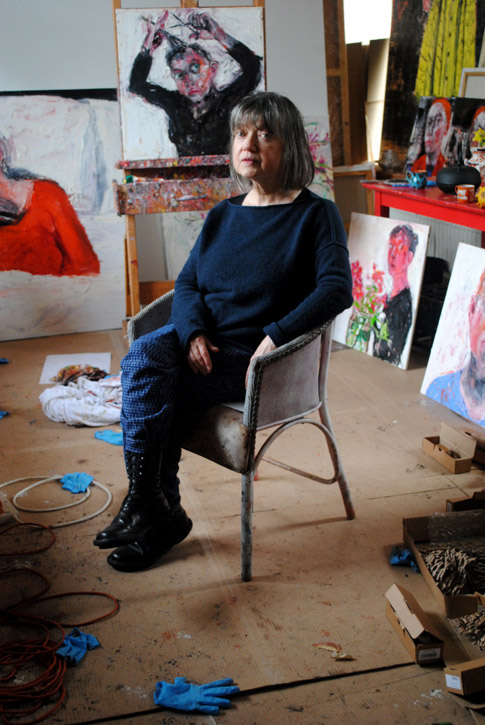
Rhys James presents painting as a physical and dangerous pursuit. It appears almost as an act of protest. Perhaps it's a comment on the patriarchal art world?
'Being an artist is a struggle and you have to keep battling on. You have to be strong in a male-dominated society'. When asked whether she would identify as a feminist, she responds: 'What woman wouldn't be?'
In many of her self-portraits, Rhys James deliberately defines herself in androgynous terms. She informs me that she consciously doesn't 'flatter' herself, but instead shows what it means to be a woman without a mask – 'as a person, as a painter'.
During the 2000s, Rhys James turned further inwards, painting closely framed stark self-portraits in a series titled 'Heads'. She describes these paintings as 'an exploration', for which she 'used a hand-held mirror to divide the face up as a landscape'.
Members of Rhys James' family also appear in her paintings. In 1984, she moved with her husband and fellow artist, Stephen West, from London to a derelict farmhouse in Wales to bring up their two young sons in the countryside. Rhys James describes this time as 'chaotic', as she and Stephen renovated the house, worked as artists, taught, and brought up their boys.
However, it also gave her time to view life from a different perspective: 'I'd had two children, I was at home, it was an interesting break… I had time to absorb and live. I was seeing things at a domestic level.'
Night Kitchen I depicts Rhys James and her son, Matthew. Although, she explains, in many of her paintings the figures could be a variety of people: 'sometimes it's difficult to know and open to interpretation. It's about the relationship of women to children.'
Like many of the artist's paintings, it is imagined in heightened colours: red, orange, turquoise, black. The intensity of Rhys James' palette points to her Australian heritage – her mother was Australian, her father Welsh – and she was born and brought up in Melbourne.
She tells me about Australia's 'lost Impressionist', John Peter Russell, who rejected naturalism in favour of painting with pure, bright colours. This was the artist who taught and inspired the likes of Henri Matisse and Vincent van Gogh: 'All three of these artists use colour as a substitute for reality, it's their own interpretation, psychological.' Similarly, Rhys James reclaims the domestic sphere from pretty pastels, painting it in exuberant tones.
The theatrical quality to Rhys James' narrative paintings also points to her upbringing: her mother was a stage actress. Many of her canvases appear as stage sets, containing costumes, props and life-size mannequins. Stairs II is part of me remembering being a child brought up in the theatre with parents who are into costume and transformation. It is also about the child having absent parents because they are preoccupied with their own activities, including putting on plays. Rhys James' mother played the leading role of Nora in Henrik Ibsen's play A Doll's House. The nineteenth-century drama tells the tale of a middle-class woman who becomes frustrated at her treatment, like a doll, by her husband. The play presents women as powerless playthings, trapped in the home, in a patriarchal society.
In The Boards, Rhys James represents her mother as Nora. 'My mum played Nora… there's my mother looking at my stepfather. It's about treading the boards and a theatrical family. Two mannequins appear… and that's me with a little doll.' After playing the role of Nora, Rhys James reveals that her mother followed in the character's footsteps, leaving her husband, and taking her daughter from Australia to London.
This sense of theatre pervades paintings such as Black Cot & Latex Glove. Within the nursery, the surrealist juxtaposition between the cot and the single, dropped glove is sinister: 'it's about the relationship between the cot and the baby and the room; the baby's behind bars, really'. Rhys James talks about taking inspiration from installation art, including Mona Hatoum's 'cots'. Hatoum makes sculptures from household objects, transforming the familiar into something uncanny. In Incommunicado, she stripped a cot down to its unpainted structure of cold metal. The home, in both Hatoum's installations and Rhys James' paintings, is an unsettling site of control.
Blue Colander, Gaudy Jug and Welsh Kettle
2015, oil on canvas by Shani Rhys James (b.1953) 
Rhys James' recent show, at the Charleston Trust, confronted creepy aspects of the home. 'Shani Rhys James: tea on the sofa, blood on the carpet' positioned the artist's paintings of domestic spaces against cosier versions by the Bloomsbury Group: 'The exhibition title referred to their works, as 'tea on the sofa' – elegant and genteel. Mine were 'blood on the carpet', subversive. But there were a lot of connections – they were painting away from London, in the country, painting interiors and still lifes, interested in the Post Impressionists and colour.' Many of Rhys James' paintings from this show featured flowers, wrestling for space in vases, or taking life in overwhelming floral wallpapers.
Once again, the artist is seen confronting motifs associated with quiet femininity. 'Flowers are powerful things', she says. 'Just look at Anselm Kiefer or Van Gogh.' Like these artists, Rhys James exploits the image of wildflowers for their fresh and ferocious dynamic. Like her representations of women, Rhys James' flowers, are filled with force. Forefronting female reality, her narratives release women from reductive depictions, offering a more complex reflection of the woman as an artist, mother, daughter and individual.
And what has she been working on during lockdown?
'I have some new paintings in an online show, 'Revisiting the Decameron', for Flowers Gallery.' It's a mixed show – 14 contemporary artists have responded to The Decameron by the fourteenth-century Italian author Giovanni Boccaccio, in which a collection of novellas are told by a group of people self-isolating during the Black Death of 1348.
Isabella Decameron
2020, oil on linen by Shani Rhys James (b.1953) 
'In Isabella, what is a seemingly normal still life has a severed head on a platter, a visualisation of the present death toll every day with the pandemic'. She is also looking forward to a new show: 'I am working on a series of self-isolation pictures, and paintings about social distancing in which people are separated by flowers'. They will be exhibited at Connaught Brown in Spring 2021.
Rhys James points out she's been 'under house arrest for 30 years' and her latest series merely offers a continuation on the theme of 'using art to find the self'. The conversation has come full circle, and it's time for the artist to leave the kitchen and return to her studio.
Ruth Millington, art critic and writer

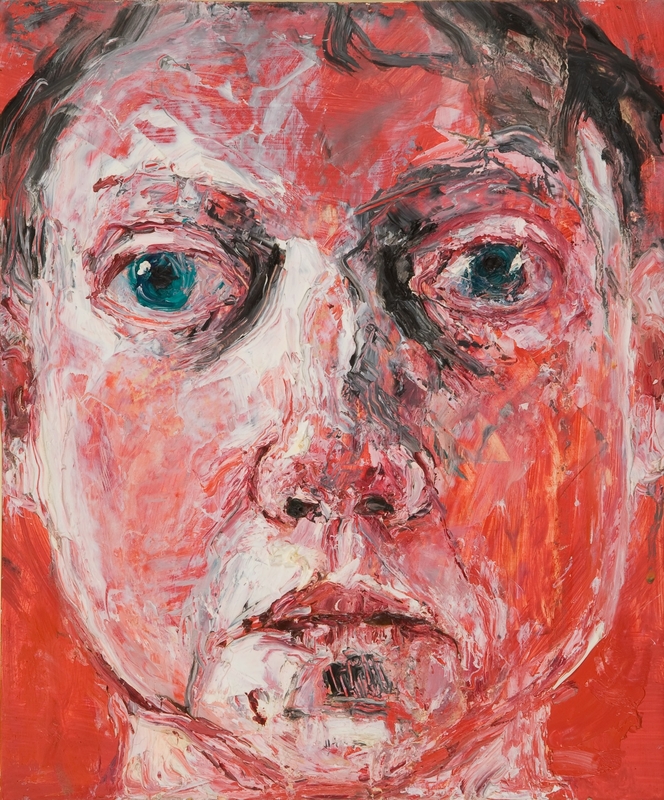
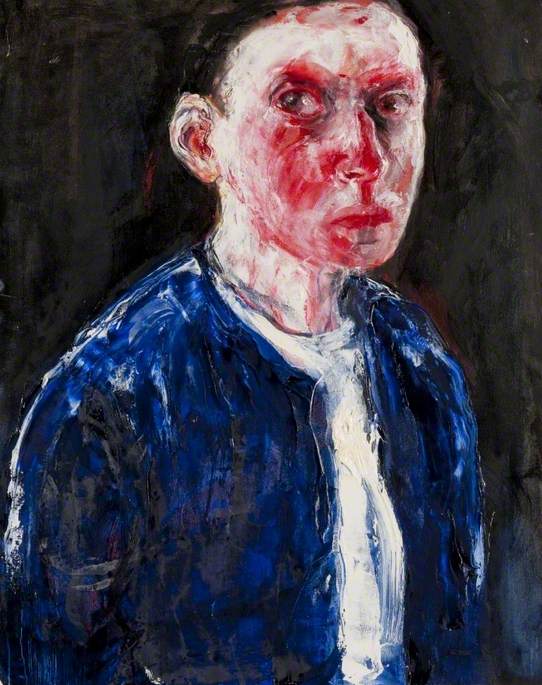
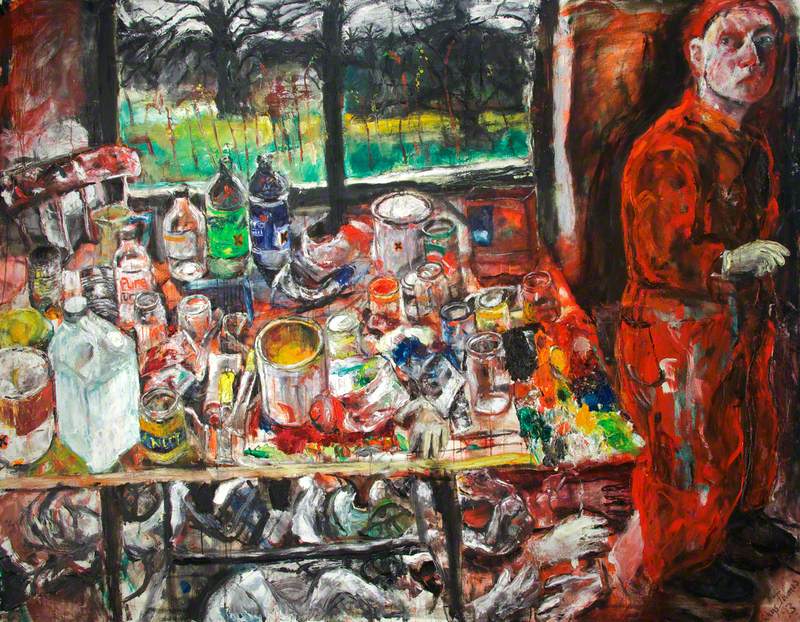

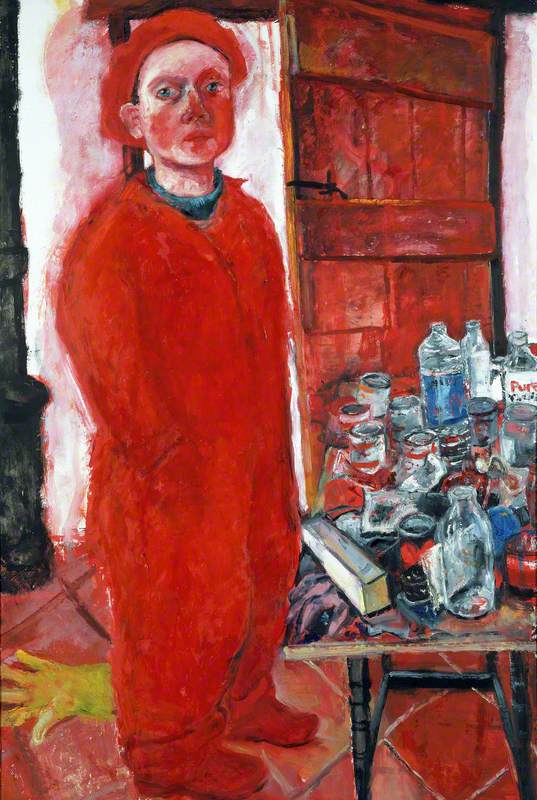
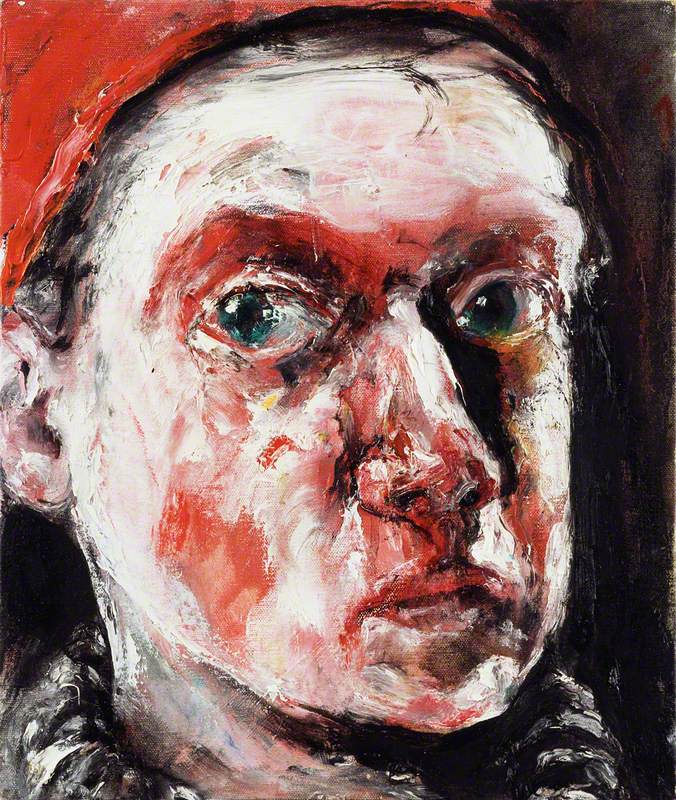
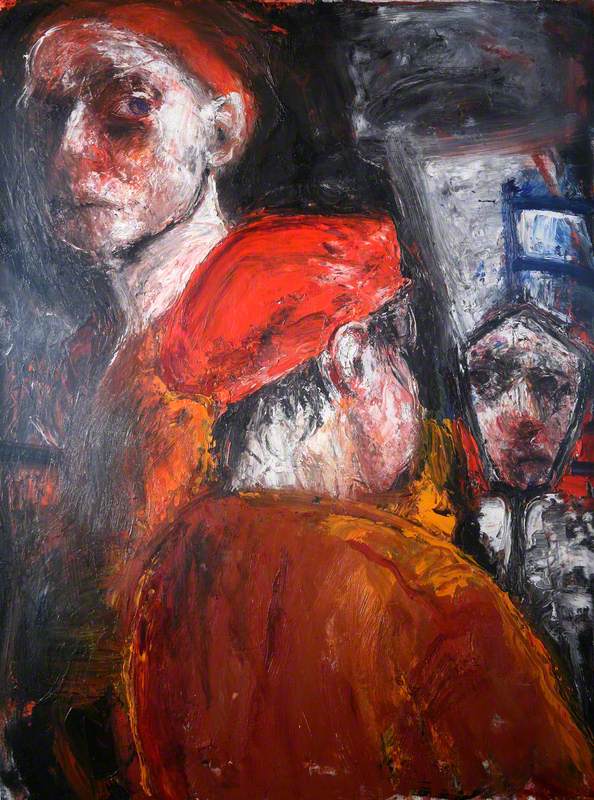

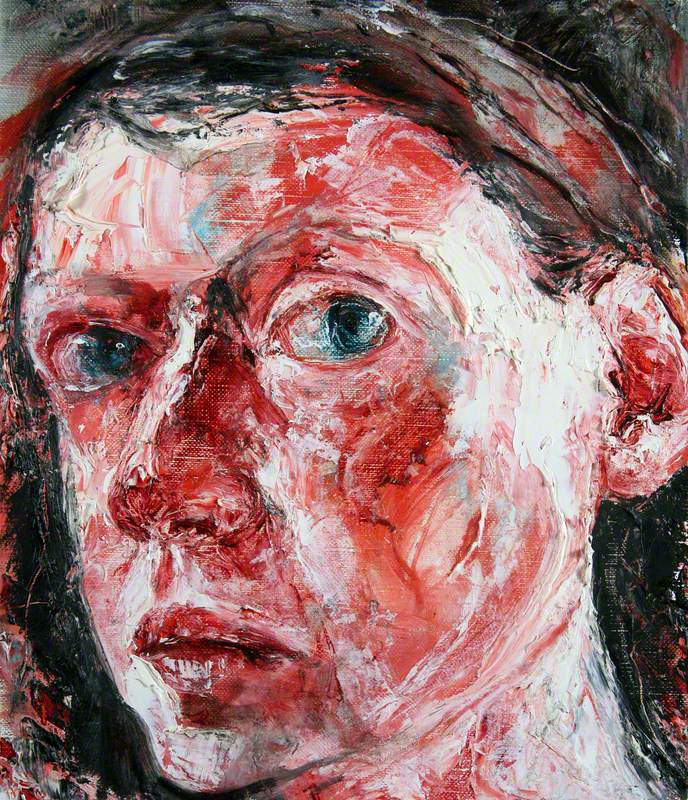
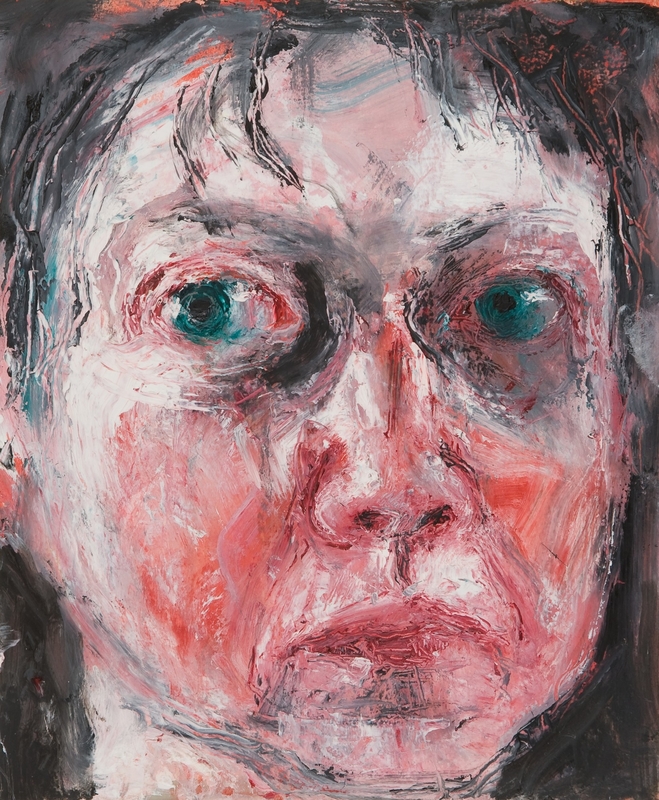

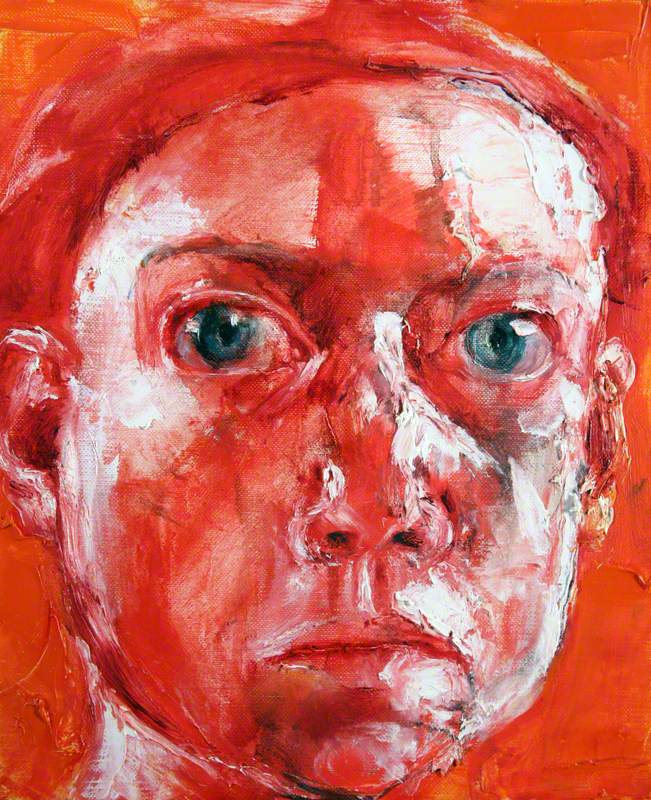
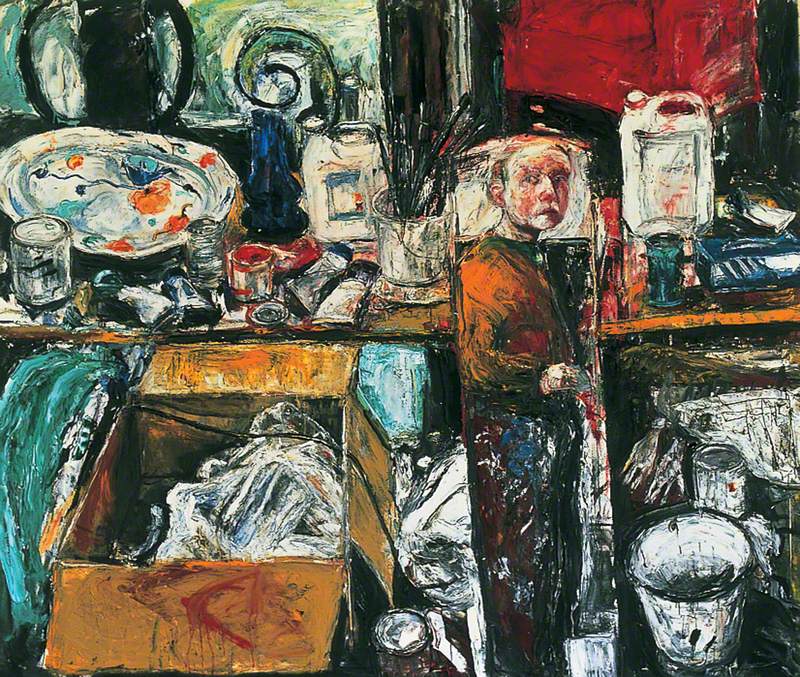
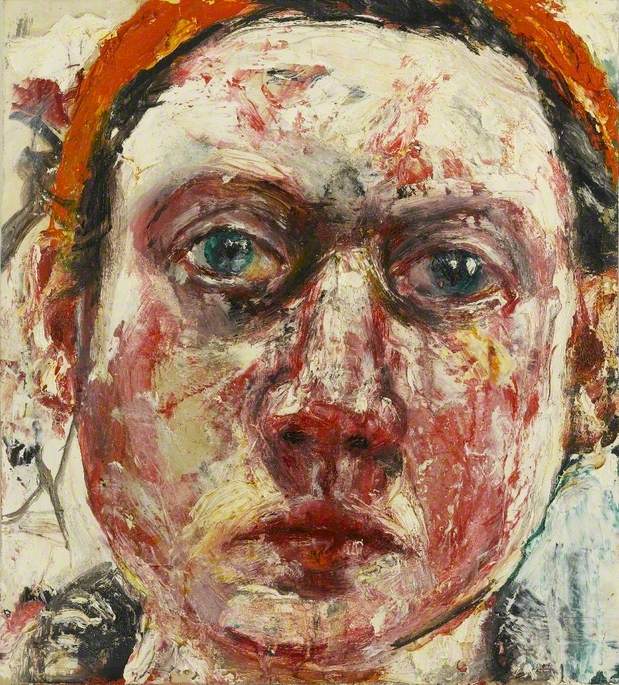
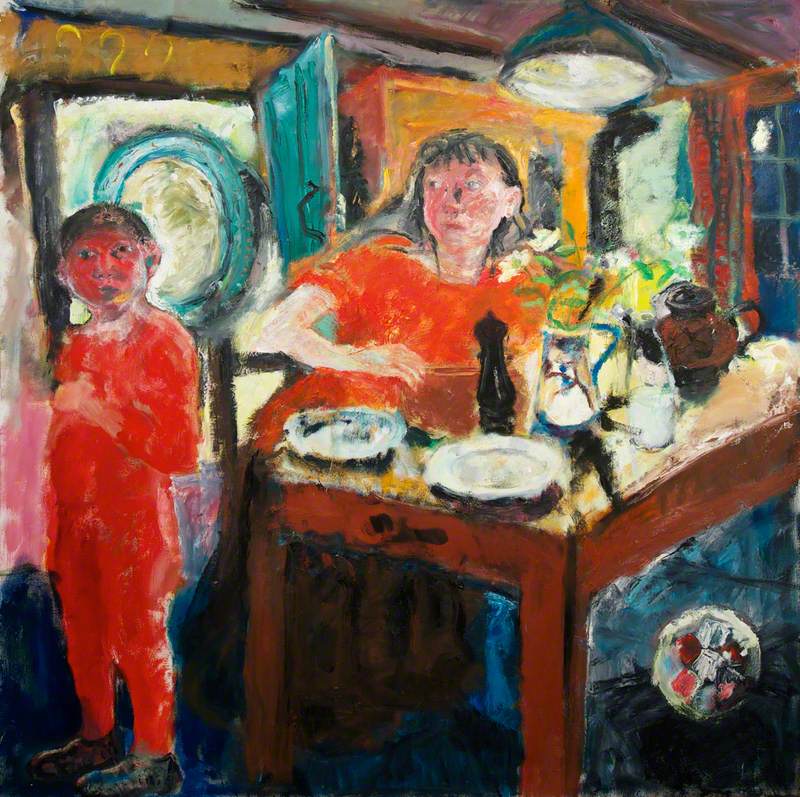
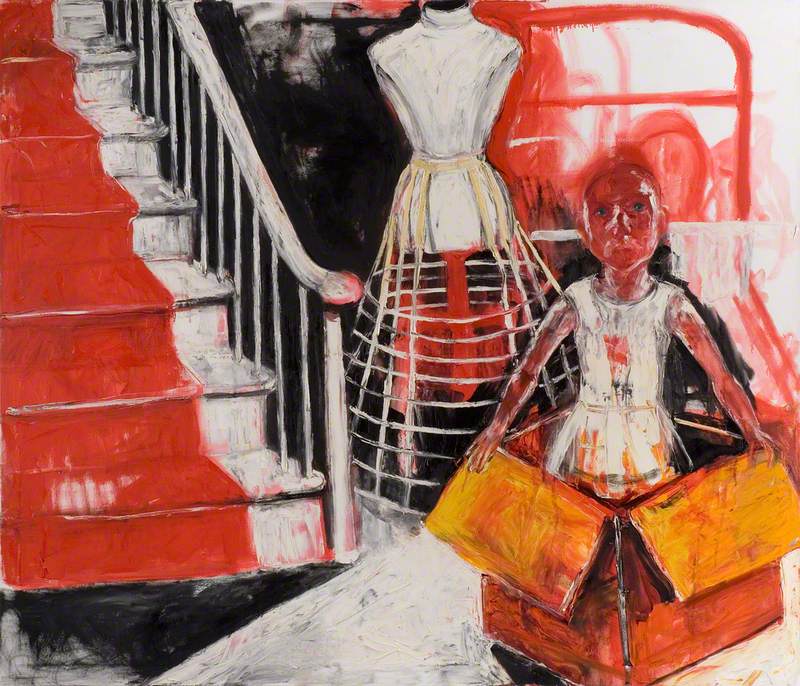
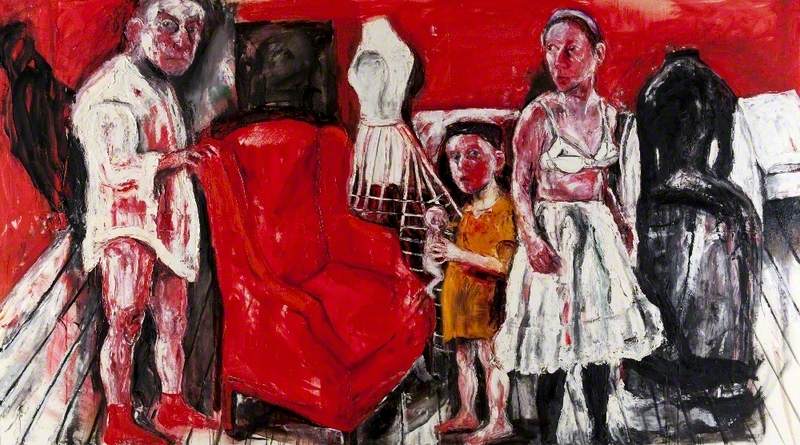
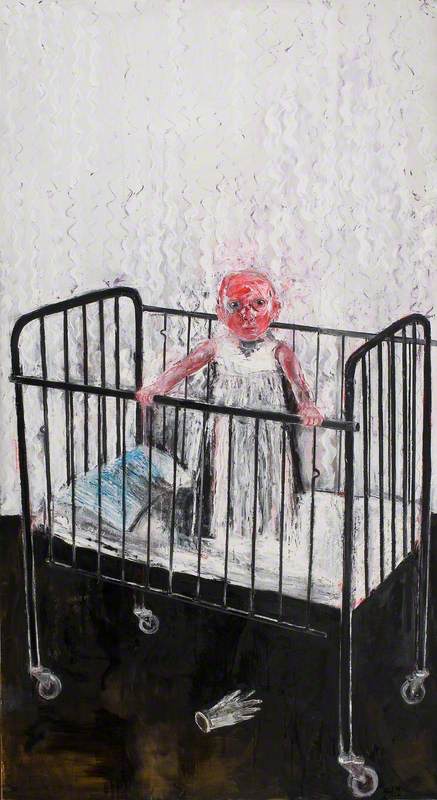
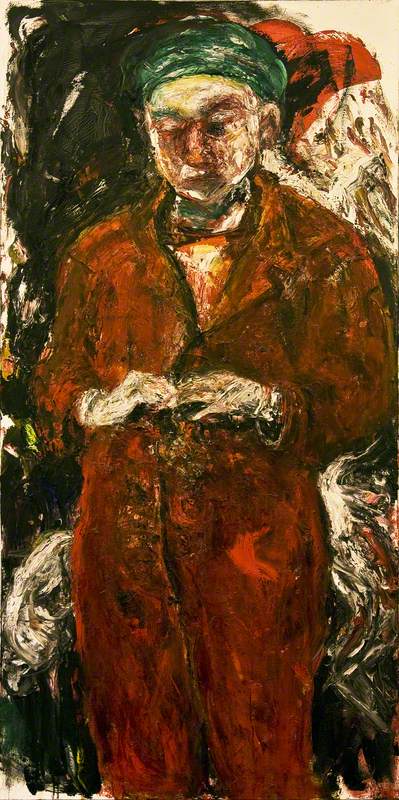
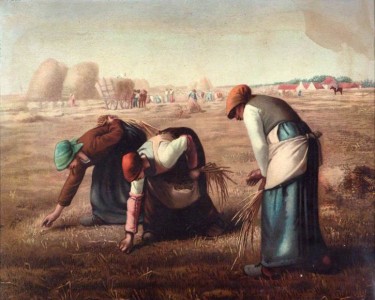
!['Phoebe Boswell: A Tree Says [In These Boughs The World Rustles]' at Orleans House Gallery](https://d3d00swyhr67nd.cloudfront.net/w800h800/artuk_stories/boswell753x1000-edited-thumb-1.jpg)

